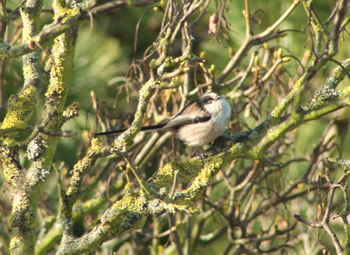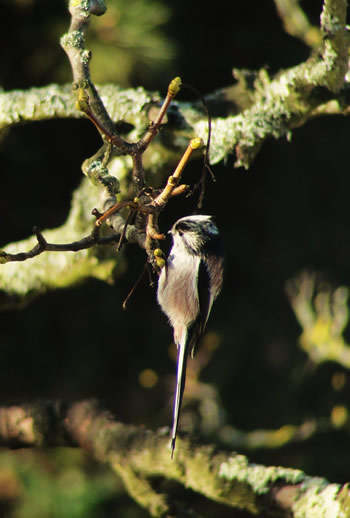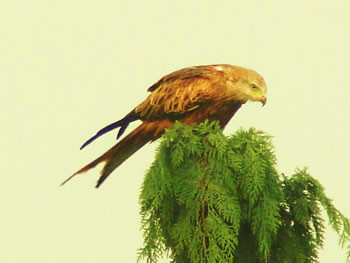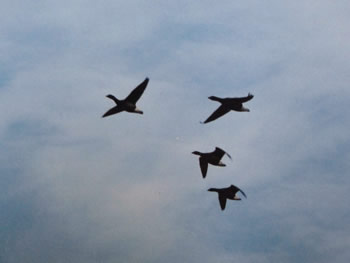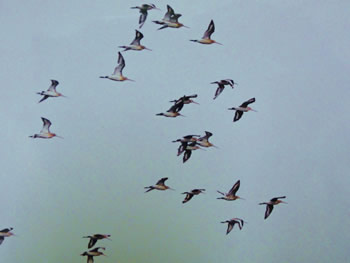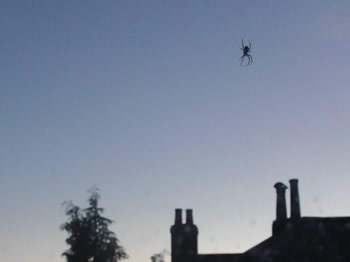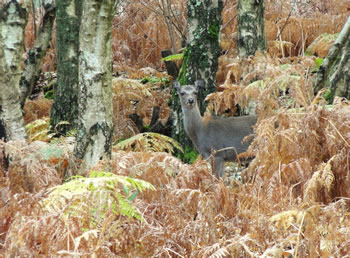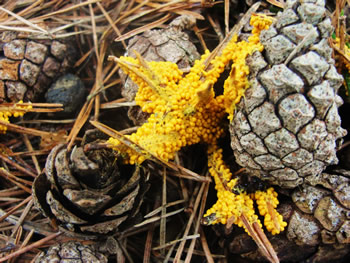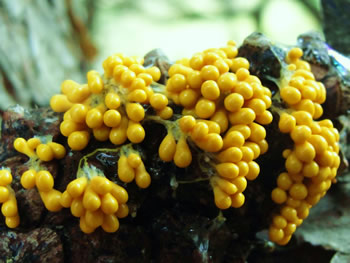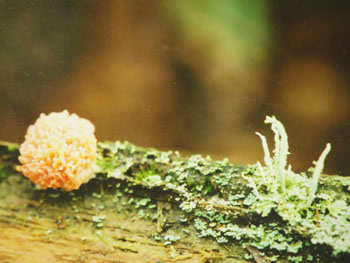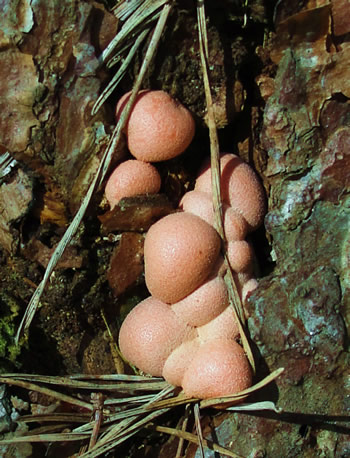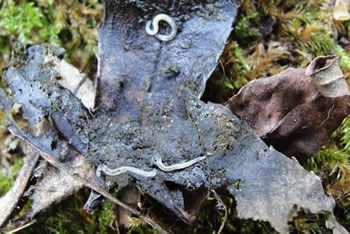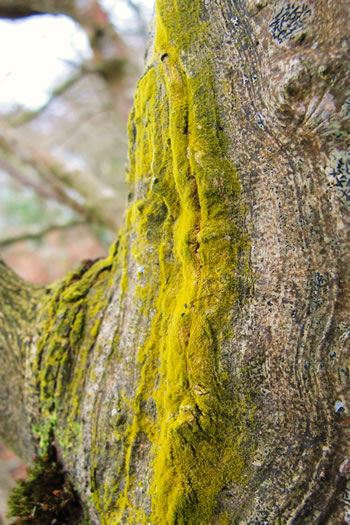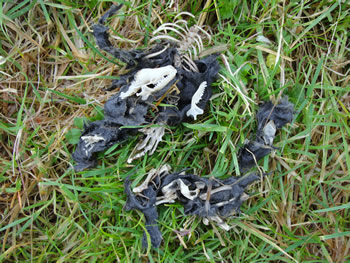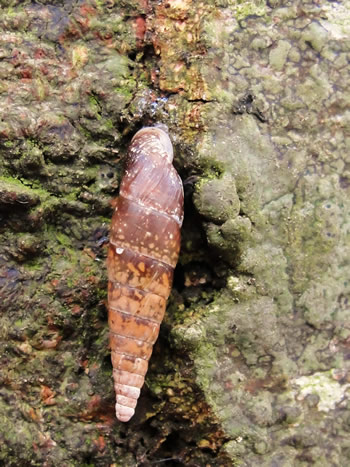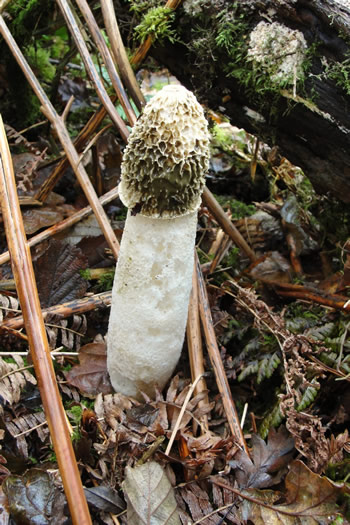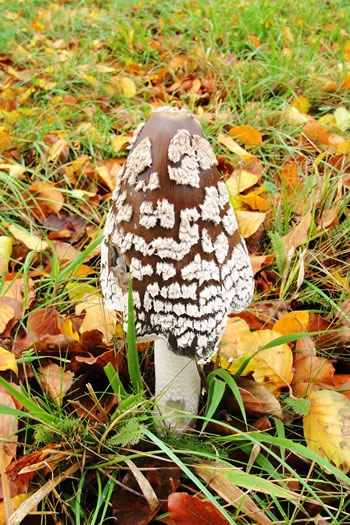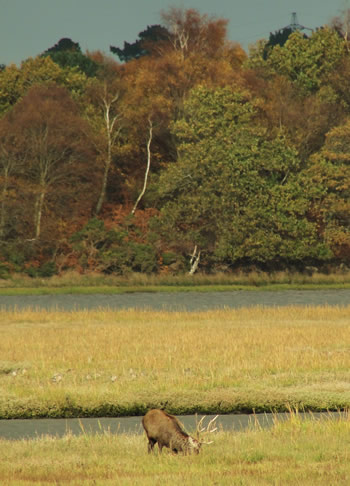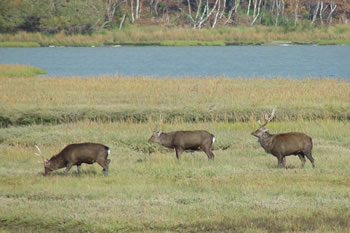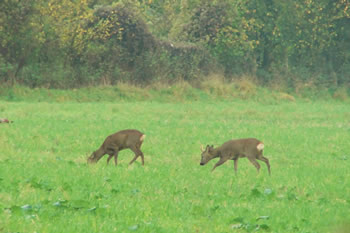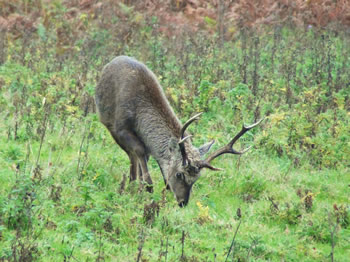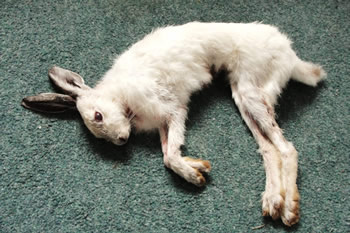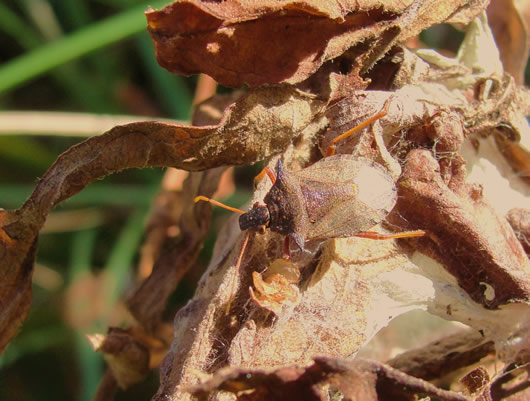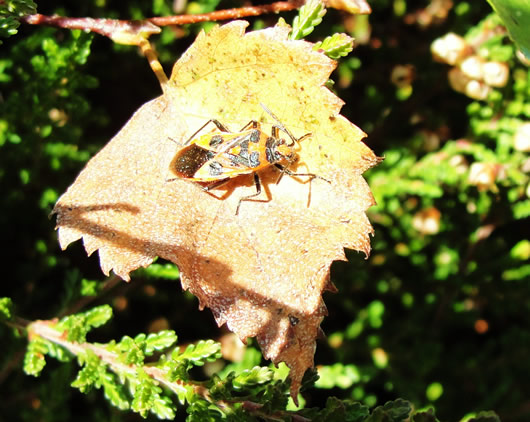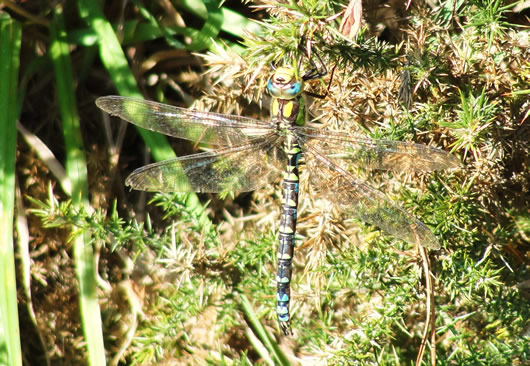Brownsea island(Branksea)is the largest of the sixteen small islands that nestle in Poole harbour. The area around the harbour as well as its waters and islands are jewels in the crown of Dorset environments,it boasts so many different habitats within and great animals from fish to mammals and birds . Brownsea island has an interesting history and is now in the hands of the National trust. Dorset wildlife trust has the lagoon,an important bird reserve renown for its breeding terns and gulls. Brownsea is the place from where the Japanese sika deer swam from on the first night of their release as additions to the islands captive fauna. Autumn is the best time to marvel at the many aspects of natural history the large area has to offer. A visit around the island ,and the harbour cruise can conjure up any species of bird,especially in the Autumn or spring as the migrants come in and out.
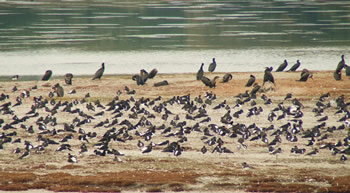 Thousands of oystercatchers, (Haematopus ostralegus),cormorants, black tailed godwits, avocets and wildfowl of many species can be seen at this time of year. Here a few oystercatchers rest in the safety of the lagoon. common cormorants are behind them.
Thousands of oystercatchers, (Haematopus ostralegus),cormorants, black tailed godwits, avocets and wildfowl of many species can be seen at this time of year. Here a few oystercatchers rest in the safety of the lagoon. common cormorants are behind them.
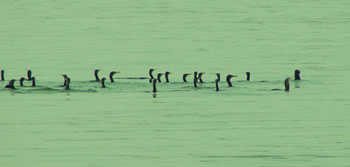 the cormorants(Phalocrocorax carbo) are of continental stock and hunt together in large groups of up to two hundred, all chasing fish shoals together.
the cormorants(Phalocrocorax carbo) are of continental stock and hunt together in large groups of up to two hundred, all chasing fish shoals together.
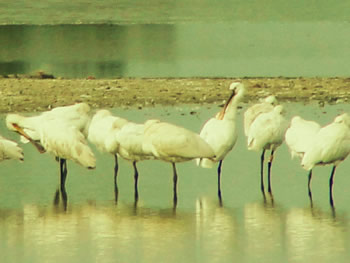 Spoonbills (Platalea leucorodia)preen all day long. The one with the yellow leg ring is from the Netherlands. They come and go when they please. Between ten and thirty can be seen at one time.
Spoonbills (Platalea leucorodia)preen all day long. The one with the yellow leg ring is from the Netherlands. They come and go when they please. Between ten and thirty can be seen at one time.
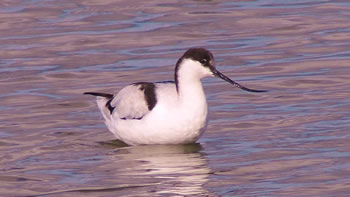 The delicate looking avocet(Recurvirostra avosetta)arrives in the late summer and over winters here. At the moment several hundred can be seen in the lagoon.
The delicate looking avocet(Recurvirostra avosetta)arrives in the late summer and over winters here. At the moment several hundred can be seen in the lagoon.
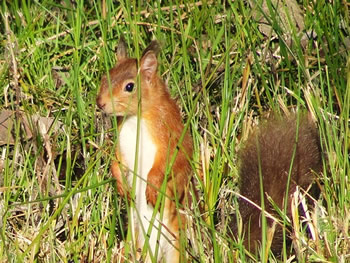 One of the islands best known inhabitants is the red squirrel(Sciurus vulgaris).They are easier to see in the autumn as they are busy preparing for winter by putting on fat and burying nuts .The species is to be found on several of the larger islands, and it was only as recently as the nineteen seventies that the red squirrel vanished from forests surrounding the harbour.The animals obviously need a larger gene pool to survive and so animals from northern Europe have been released onto Brownsea over the years to keep them healthy. They look slightly different from the English race by being smaller, darker with dark instead of white tails during the summer.
One of the islands best known inhabitants is the red squirrel(Sciurus vulgaris).They are easier to see in the autumn as they are busy preparing for winter by putting on fat and burying nuts .The species is to be found on several of the larger islands, and it was only as recently as the nineteen seventies that the red squirrel vanished from forests surrounding the harbour.The animals obviously need a larger gene pool to survive and so animals from northern Europe have been released onto Brownsea over the years to keep them healthy. They look slightly different from the English race by being smaller, darker with dark instead of white tails during the summer.
The green elf cup fungus (Chlorosplenium aeruginascens)stains oak wood green but the fruits are uncommon. I was surprised to see a huge array of fruits on a large dead piece of wood under such dry conditions.
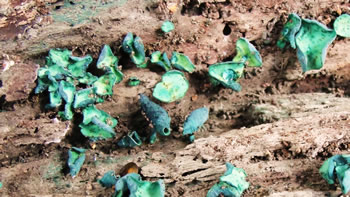 The green wood used to be used in Tunbridge ware boxes, but it usually exists on small fallen pieces of larger branches.
The green wood used to be used in Tunbridge ware boxes, but it usually exists on small fallen pieces of larger branches.
Back onto the larger heathland areas around the harbour, Thousands of little appendages adorn the dead flower heads of the purple moor grass(Molinia caerulea) each flower head may have up to twenty fungal fruits of the Ergot fungus(Claviceps purpurea). This dangerous fungus was responsible for the ‘saint Anthony fire’ during the middle ages, and made people mad as it was often harvested among the wheat and rye grasses unknowingly.
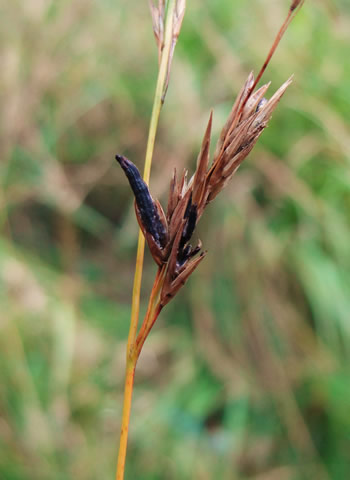 The Deadly Ergot.
The Deadly Ergot.
 Note the short legs that both species have. They look out of proportion.
Note the short legs that both species have. They look out of proportion.
